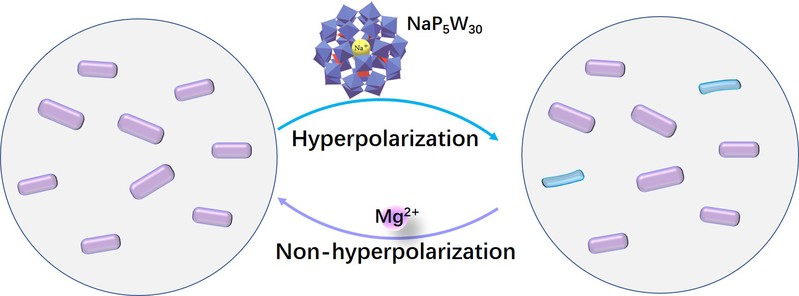Kun Chen, Qiang Yu, Yuan Liu, Panchao Yin*
Developing strategies against the antibiotic resistance is a major global challenge for public health. Here, we report the synergy of the combination of Preyssler-type polyoxometalates (POMs) ([NaP5W30O110]14− or [AgP5W30O110]14−) and ribosome-targeting antibiotics for high antibacterial efficiency with low risk of antibiotic resistance. Due to their ultra-small sizes and active surface ligands, POM anions show strong affinity to bacterial cell membrane and impose hyperpolarization of the bacterial cells as well as the decrease of Mg transporters, which finally lead to the structural perturbations of ribosomes and instability of bacterial structures. The bacterial growth can, therefore, be regulated by the presence of POMs: a fraction of Bacillus subtilis shifted to a ‘dormant’, slow-growing cellular state (an extended lag phase) upon the application of subinhibitory concentration of POMs. An approach to combat antibiotic resistant bacteria by applying POMs at their early growth phase followed by antibiotic exposure is validated, and its high efficiency for bacterial control is confirmed.
制定针对抗生素耐药性的策略是全球公共卫生面临的重大挑战。在这里,我们报道了Presssler型多金属氧酸盐(POM)([NaP5W30O110]14−或[AgP5W30O110]14−)与靶向核糖体的抗生素的协同作用,具有很高的抗菌效率,抗生素耐药性的风险低。由于它们的超小尺寸和活性表面配体,POM阴离子对细菌细胞膜具有很强的亲和力,并强加了细菌细胞的超极化作用,并降低了Mg转运蛋白,最终导致核糖体的结构扰动和细菌结构的不稳定。因此,细菌的生长可以通过POM的存在来调节:在亚抑制浓度的POM的作用下,枯草芽孢杆菌的一部分转变为“休眠”,缓慢生长的细胞状态(延长的迟滞期)。通过在POMs的早期生长阶段应用抗生素,然后暴露于抗生素中来对抗抗生素耐药性细菌的方法已得到验证,并证实了其对细菌控制的高效率。

文章链接:https://www.sciencedirect.com/science/article/pii/S0162013421001100

